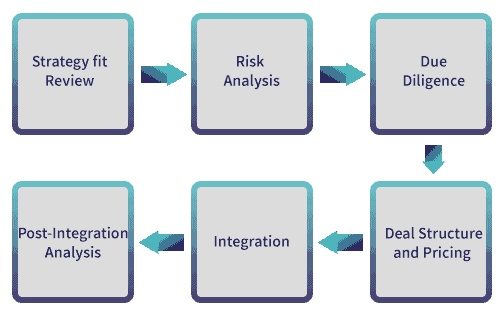What Are the Ways to Restructure the Supply Chain to Enhance its Performance?
The 2021 State of Manufacturing Report shows how manufacturers are looking to restructure their supply chain. Nearly half of the respondents are prioritizing supply chain investments. This could be anything from switching to new suppliers or transporters, to hiring an external supply chain management team to find more efficient ways of managing their supply chain. The goal is to ameliorate production flexibility, resiliency, sustainability, and communication with their suppliers. This restructuring should enable their supply chains to meet demand and prevent future supply chain concerns.
Specifically, this study found that 71% of these manufactures are redesigning their supply chain to be more technologically advanced. Often this is automating certain production processes that were previously done by hand. 58% are increasing their supplier base, and 55% are seeking more transparency from their suppliers. 45% of these manufactures are choosing to reshore or nearshore their productions.
What is the Meaning of Reshoring?
Reshoring in manufacturing is returning manufacturing to the home country from a foreign location. This can be all production efforts, or a portion of the manufacturing process. The goal of reshoring is to shorten the supply chain to reduce the chance of disruptions, and have the manufacturing closer to where the goods will be sold so the transportation of goods is minimized, and thus less expensive.
What is Supply Chain Nearshoring?
Nearshoring is similar to reshoring as the manufacturing efforts are moved closer to the home country from a more distant location. This enables the goods to travel a shorter distance to where they are intended to be sold, shortening the supply chain and easing logistics. For example, in 2020 the American aerospace company Boeing nearshored a portion of their aircraft production to Mexico. Boeing outsourced the aircraft interior assembly to Safran, the third largest aerospace provider. As of 2020, Safran is producing 95% of the wiring for the Boeing 787 Dreamliner, as well as completing wiring for other aerospace companies such as Airbus.
What is Supply Chain Offshoring?
Offshoring is the term used to describe when companies move their manufacturing to a foreign location. The goal of offshoring is to cut manufacturing costs, as certain foreign locations have cheaper materials and labor.
Benefits Of Reshoring
There are several reasons why enterprises are favoring reshoring in developed countries for their manufacturing needs.
Underestimation Of Cost
One reason is due to the underestimation of how much offshoring costs. When offshoring first became a popular choice, companies copied their competitors’ strategies thinking they would have the same positive results. Many viewed the lower cost of goods and cheap labor as a simple way to cut costs on production. However, that is not always the case. The cost for management, monitoring, logistics, and unforeseen costs can become higher than anticipated, making offshoring efforts unprofitable.
Higher Quality and Improved Brand Reputation.
In recent years it has become a trend for companies to favor patriotism and advertise the fact that they favor providing local jobs over cutting costs. It is common to see “Made in America” proudly written on brand packaging as this is an incentive for many consumers.
The Reshoring Institute recently conducted a survey which asked approximately 500 Americans if they were given the choice between a product that clearly states that it was made in the USA and an identical product that was made internationally, nearly 70% of consumers would choose to purchase the product made in the United States. Further, just over 83% of respondents stated they would be willing to pay up to 20% more for products that were produced domestically. Many of the respondents claimed they perceived a higher quality of the products that were produced in the United States. The survey offered no evidence suggesting the American-made products were of better quality, it was only their perception.
Companies are choosing to produce goods in their home country to maintain their reputation of high quality and impressive ethics. Brands such as Vitamix, Kiehl’s, and La-Z-Boy are noted for favoring domestic production as all their goods are produced within the United States.
Improved Flexibility
Improved flexibility is another reason why reshoring is becoming an attractive option when it comes to the production of goods. Certain industries, such as those with a heavy focus in engineering, have hindered innovation due to the physical distance between their R&D location and their production site. The distance makes communication difficult due to time zone differences, and overall slows down the speed of new developments. Innovation is simplified when the supply chain is shorter and in closer proximity to where R&D is executed.
Further, being closer in proximity allows the manufacturer to visit production sites with ease. When it comes to the supply chain, the greater the distance the greater the risk. Having cheap labor and materials can quickly become futile when trying to communicate with a supplier. When the supplier is closer in proximity, transportation logistics are simpler, and it’s easier and cheaper to visit the manufacturing site to resolve efficiency or quality issues.
Protect Intellectual Property
While it is not always an issue depending on the industry, protecting intellectual property is an important benefit of onshoring that should be mentioned. Due to the loose copyright and intellectual property laws of various foreign regions, suppliers can quickly become a competitor. This phenomenon is called value-chain climbing, and it is not that uncommon. Suppliers will acquire the skills needed to be in the industry by working for another company’s manufacturing, then enter the market as their own brand. Sony and Samsung both benefited from value-chain climbing as they both started out making products for different companies.
The Challenges of Reshoring
While reshoring or nearshoring have many benefits, they do have their pitfalls.
Higher production costs, labor costs, material expenses, and storage all add up, making reshoring an expensive option compared to offshoring. The low labor and material costs of offshoring is a tempting offer to manufacturers to better their margins.
- Lack Of Infrastructure and High Skilled Workers
It is common in nearshored manufacturing sites to see fewer laborers, and more highly skilled workers. Certain aspects of production that were once done by hand have been automated, and the manufacturing site needs highly skilled workers to maintain the automation equipment. The concern is finding individuals that have the skills required for the jobs can be elusive.
Further, many developed countries are not set up to be manufacturing locations since manufacturing efforts have been offshored for so long. The initial cost to set up a production site in one of these regions can be much higher as the infrastructure is not yet prepared.
Legal troubles can appear when trying to reshore one’s productions. If the company has any contracts with suppliers in a foreign country, it is important to discuss with a lawyer or industry expert on how to end these contracts.
How To Restructure Your Supply Chain
The first step towards restructuring one’s supply chain is to do a restructuring analysis. The graphic shown below includes the key steps that are beneficial for supply chain restructuring. This will enable you to discover where the weak links are in your supply chain, so you can begin mitigating these problems.

When it comes to deciding whether to offshore, nearshore, or reshore, a Total Cost of Ownership (TCO) analysis can also play a helpful role. TCO was made popular in the 1980s by Gartner, a technology research and consulting company. This analysis uncovers all of the costs associated with production, including all of the commonly overlooked expenses such as a last-minute flight to inspect a supplier site. This tool is particularly helpful as it is easy to be pleased with the final cost of the production from the supplier, only to realize the hidden or unexpected costs when it is too late.
When it comes to calculating your TCO, you need to calculate all of the costs associated with manufacturing your products. This can include expenses such as the cost of raw materials, wages for laborers, storage, insurance, etc. Employing a third-party supply chain management team is valuable as they are familiar with the common and uncommon expenses that may come up when creating or restructuring one’s supply chain.
What Are the Different Options for Restructuring the Supply Chain Management?
When it comes to a major restructuring, employing a third-party supply chain management team is an excellent option as they are experts in the industry. Global Partner Solutions (GPSI) has extensive expertise in the aerospace, transportation, and medical device industries, and can use their proven tactics to restructure your supply chain. GPSI offers a Supplier Risk Assessment to uncover your suppliers’ weaknesses and create solutions. This assessment can also:
- Reveal your supplier’s true production capacity;
- Identify product maturity and sustainability; and
- Determine your supplier’s enterprise governance and abilities.
By using the solutions offered by GPSI, you can determine the best solutions to move forward in restructuring your supply chain.
GPSI Aids in Re-sourcing and Relocating 9000 Parts
An aerospace company located in Ontario, Canada employed GPSI to transform an assembly-only facility into a fully self-sustaining organization. Prior to this transformation, a parent company sourced individual parts and sent them to the assembly facility in kits. The parent company wanted this organization to become solely responsible for sourcing 9000 individual components within North America. This was a massive supply chain restructure, which required a third-party supply chain management team.
Within one year, GPSI employed a project leader, developed a plan, established milestones, and took actionable steps to complete this transformation. From there, GPSI also:
- Hired and managed various personnel to complete the job, including buyers, procurement clerks, ERP/MRP implementation group and leader, tool engineer, MRB liaison engineer, supplier quality engineers, industrial engineers, vice-president of operations, senior manager, HR, and procurement managers.
- Implemented cost tracking tools.
- Successfully transferred the duties that were once solely on the parent company to the onsite stakeholders of the organization.
With the help of GPSI, this organization is now capable of procuring all parts and assemblies for three aircraft wing platforms. Beyond the newfound independence, the parent company has been freed of their duties, bringing time and money back to the company.
Due to the recent unforeseen disruptions to the global supply chain, manufacturing enterprises are realizing it is pertinent for them to develop a quality supply chain strategy. Having a well-thought-out strategy can enable companies to develop strong relations with their suppliers and create a high-quality end product. These strategies empower companies as they no longer need to spend extensive amounts of time monitoring and managing their suppliers. Investing in strong supply chain management can be one of the best business decisions companies can make.






